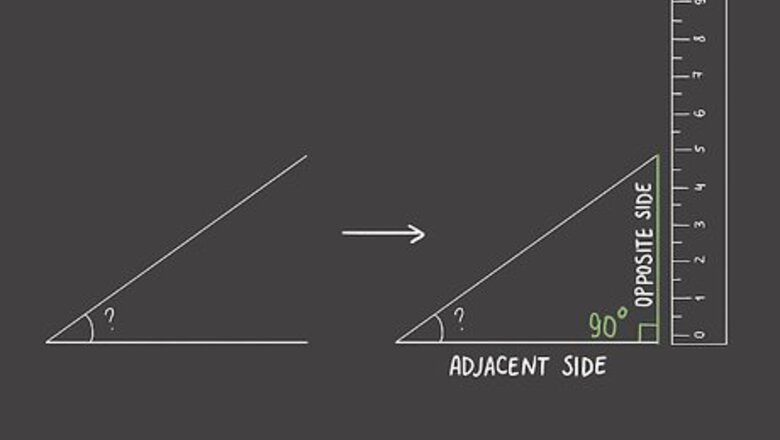
views
X
Research source
Acute
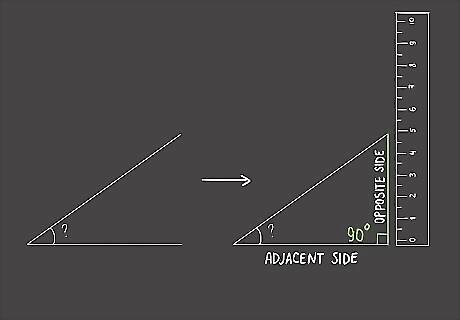
Draw a vertical line connecting the 2 rays of the angle. To determine the number of degrees in an acute angle, connect the 2 rays to form a triangle. Line up the short end of your ruler with the bottom ray, then draw a vertical line intersecting the other ray using the long side of your ruler. The vertical line creates a right triangle. The angle formed by the adjacent side (the bottom ray of the angle) of the triangle and the opposite side (the vertical line) measures 90 degrees.
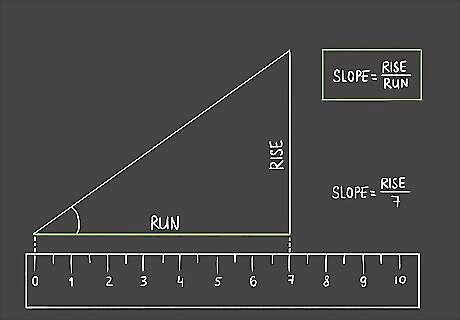
Measure the length of the adjacent side to find the run. Place the end of your ruler at the vertex of the angle. Measure the length of the adjacent side from the vertex to the point where it intersects with the opposite side. This amount is the run value in your slope equation, where slope = rise/run. If you measured 7, your equation at this point would be "slope = rise/7."
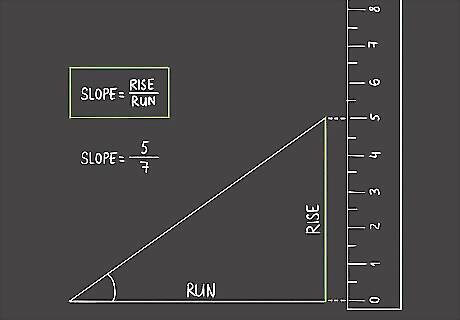
Measure the length of the opposite side to find the rise. Set the short end of your ruler flush against the adjacent side of the triangle. Measure the length of the vertical line from the point where it meets the adjacent side to the point where it meets the upper ray of the angle (the hypotenuse of your triangle). This amount is the rise value in your slope equation. If you measured 5, you would fill in your equation so that "slope = 5/7."
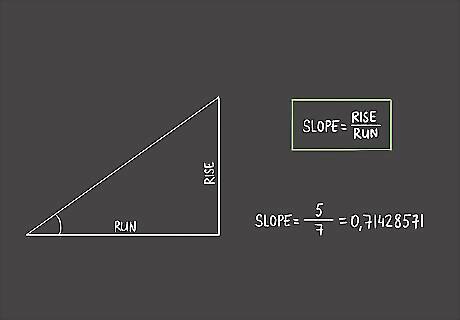
Divide rise by run to find the slope of the angle. The slope is the steepness of the diagonal line, or hypotenuse, of your triangle. Once you know this number, you can calculate the degrees of your acute angle. To continue the example, the equation "slope = 5/7" would yield "slope = 0.71428571."Tip: Don't round the number before calculating the degrees in the angle – it could decrease the accuracy of the result.
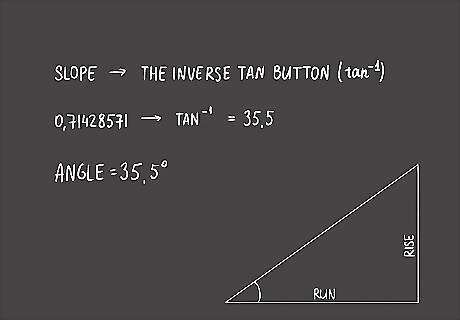
Use your calculator to determine the degrees of the angle. Type the value for slope into your scientific calculator, then press the inverse tan button (tan). This will give you the degrees of the angle. To continue the example, with a slope of 0.71428571, the angle is 35.5 degrees.
Obtuse
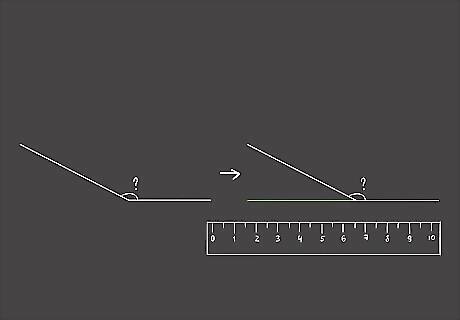
Extend the bottom ray of the angle in a straight line. Mark your vertex with a dot, then use the long side of your ruler to draw a straight line to the left of the vertex. The bottom ray of the angle should be a single long line that extends below the open top ray of the angle. Make sure your line is perfectly straight. If it is angled up or down, it will ruin the accuracy of your equation.Tip: if you're working on unlined paper, you can line up the short end of your ruler with the side of the paper to make sure your line extension is straight.
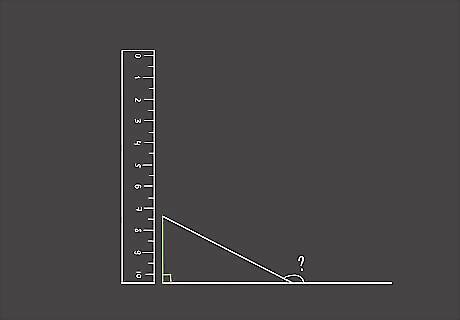
Draw a vertical line connecting the top ray and the line. Line up the short end of your ruler with the bottom ray at a point where the long side crosses the top ray. Follow the long side to draw a line straight up from the bottom ray that connects the two. Effectively, you have created a small right angle underneath the obtuse angle you want to measure, turning the top ray of the obtuse angle into the hypotenuse of your right angle.
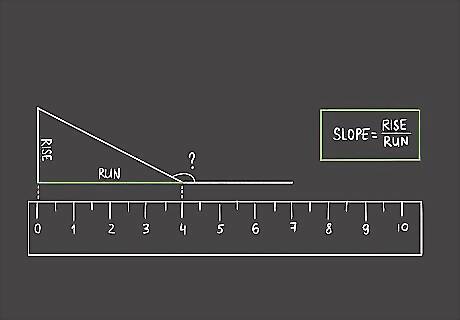
Measure the length of the bottom line from the vertex. Place your ruler below the bottom line, with the beginning at the vertical line creating the right angle. Measure the length from that point of intersection to the vertex of the original angle. You're determining the slope for the angle of the acute triangle, which you can use to calculate the degrees in the acute angle. The bottom line is the run value in the equation "slope = rise/run."
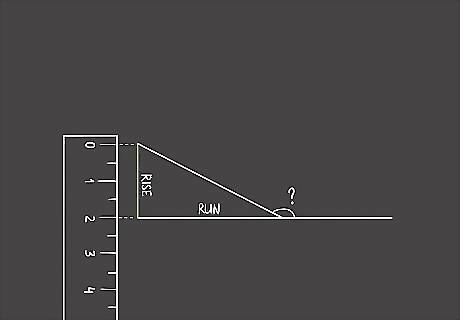
Measure the length of the vertical line. Line up the short end of your ruler with the bottom line of the small acute triangle. Read up the ruler to the point where the vertical line meets the open ray of your obtuse angle. This is the length of your vertical line. The length of your vertical line is the rise value in the equation "slope = rise/run." Once you know the values for both rise and run, you can calculate the slope of the acute angle.
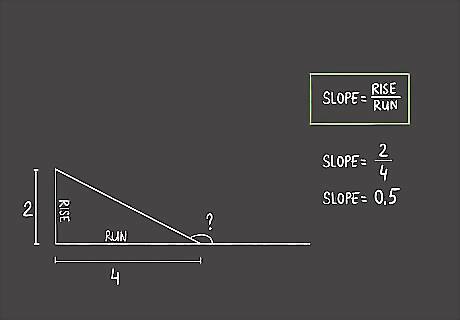
Find the slope of the acute angle. Divide the rise value by the run value to determine the slope of the acute angle. You'll use this value to calculate the degrees of the acute angle. For example, the equation "slope = 2/4" would yield "slope = 0.5."

Calculate the degrees of the acute angle. Enter your slope value in your scientific calculator, then press the inverse tan button (tan). The value displayed is the number of degrees in the acute angle. To continue the example, if your slope is 0.5, the acute angle is a 26.565-degree angle.

Subtract the degrees of the acute angle from 180. A flat line is a straight angle with 180 degrees. Since you drew a straight line, the sum of the acute angle you calculated and the obtuse angle will be 180 degrees. Subtracting the degrees of the acute angle from 180 will give you the degrees of your obtuse angle. To continue the example, if you have an acute angle of 26.565 degrees, you have an obtuse angle of 153.435 degrees (180 – 26.565 = 153.435).
Reflex
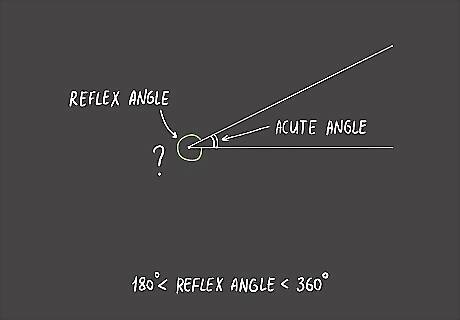
Identify the smaller acute angle associated with the reflex angle. A reflex angle has more than 180 degrees but fewer than 360. This means that if you look at the reflex angle, you'll also see an acute angle inside the rays of the reflex angle. By determining the degrees of the acute angle, you can calculate the degrees in the reflex angle. You can use the basic slope equation and the inverse tangent function on your scientific calculator to find the degrees in the acute angle.Tip: If you get confused because the angle is upside down, turn your paper and ignore the reflex angle until the last step.
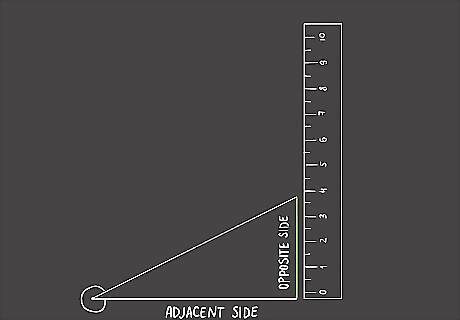
Draw a vertical line connecting the rays of the acute angle. Line up the short end of your ruler with the ray of the angle that is horizontal rather than diagonal. Then draw a vertical line that meets the horizontal ray of the angle. The horizontal line becomes the adjacent side of your triangle, and the vertical line becomes the opposite side of the acute angle you want to measure.
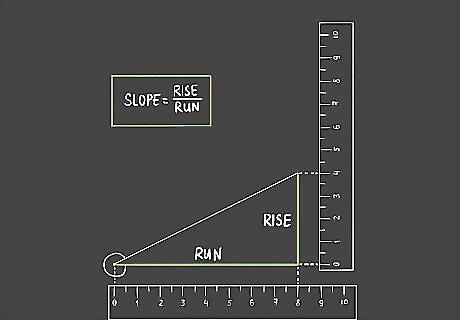
Measure the rise and the run of the acute angle. In the equation "slope = rise/run," the rise is the length of the vertical line, or opposite side of your triangle. The run is the length of the horizontal line, or adjacent side of your triangle. Measure the horizontal line from the vertex to the point where it meets the vertical line. Measure the vertical line from the point where it meets the horizontal line to the point where it meets the diagonal line.
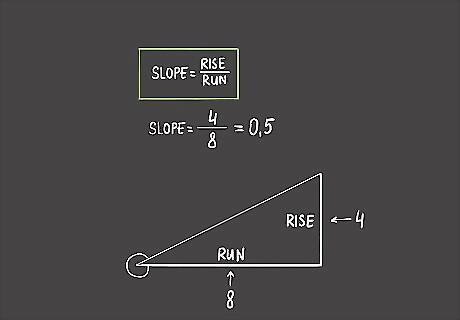
Divide rise by run to find the slope of the acute angle. Plug the values you found for the length of the vertical and horizontal lines into your slope equation. When you divide the length of the vertical line by the length of the horizontal line, you'll get the slope for the angle. For example, if your horizontal line measured 8 and your vertical line measured 4, your equation would be "slope = 4/8." The slope of your angle would be 0.5.

Use your calculator to find the degrees of the acute angle. Type the value you got for the slope of the angle into your scientific calculator, then press the inverse tangent button (tan). The value displayed is the degrees of the smaller acute angle. To continue the example, if your slope is 0.5, the acute angle would measure 26.565 degrees.
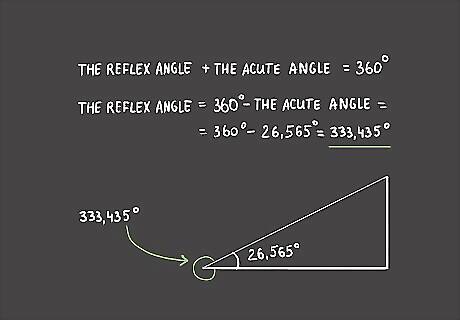
Subtract the degrees of the acute angle from 360. A circle has 360 degrees. Since a reflex angle is an angle of more than 180 degrees, you relate it as a portion of a circle. The degrees of the reflex angle and the degrees of the smaller acute angle would add up to 360. To continue the example, if the smaller acute angle measures 26.565 degrees, the reflex angle would measure 333.435 degrees.


















Comments
0 comment